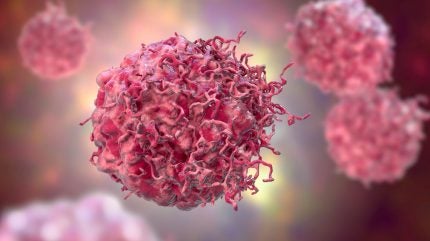Request Demo
Last update 08 May 2025

University of Wisconsin Carbone Cancer Center
Last update 08 May 2025
Overview
Tags
Endocrinology and Metabolic Disease
Digestive System Disorders
Neoplasms
Therapeutic vaccine
Shared antigen vaccine
DNA vaccine
Disease domain score
A glimpse into the focused therapeutic areas
No Data
Technology Platform
Most used technologies in drug development
No Data
Targets
Most frequently developed targets
No Data
| Disease Domain | Count |
|---|---|
| Neoplasms | 1 |
| Endocrinology and Metabolic Disease | 1 |
| Top 5 Drug Type | Count |
|---|---|
| DNA vaccine | 1 |
| Therapeutic vaccine | 1 |
| Shared antigen vaccine | 1 |
| Top 5 Target | Count |
|---|---|
| ACP3(acid phosphatase 3) | 1 |
Related
2
Drugs associated with University of Wisconsin Carbone Cancer CenterTarget |
Mechanism ACP3 stimulants [+1] |
Active Org. |
Originator Org. |
Active Indication |
Inactive Indication- |
Drug Highest PhasePhase 2 |
First Approval Ctry. / Loc.- |
First Approval Date- |
Target |
Mechanism NMDA receptor antagonists |
Active Org.- |
Originator Org. |
Active Indication- |
Inactive Indication |
Drug Highest PhasePending |
First Approval Ctry. / Loc.- |
First Approval Date- |
1
Clinical Trials associated with University of Wisconsin Carbone Cancer CenterNCT03798301
Treatment of CMV Infections With Viral-Specific T Cells Against CMV in Pediatric and Adult Immunocompromised Patients or Recipients of Allogeneic Stem Cell Transplantation
The present trial will consist of the treatment of 20 pediatric and adult Hematopoietic Stem Cell Transplantation (HSCT) recipients or immunocompromised participants diagnosed with opportunistic Cytomegalovirus (CMV) infections with virus-specific, antigen-selected T-cells. CMV-specific T-cells will be isolated from donor leukapheresis products using the CliniMACS® Prodigy. Prior studies on transfer of CMV specific T-cells have been shown to be safe and efficacious in the treatment of CMV infections.
The main trial objective is to evaluate the feasibility and safety of CMV-specific T-cell transfer in adult and pediatric participants suffering from CMV infections or reactivation following HSCT or due to other immunocompromised states (e.g.; primary immunodeficiency, cytotoxic therapy).
Participants will be followed for one year.
The main trial objective is to evaluate the feasibility and safety of CMV-specific T-cell transfer in adult and pediatric participants suffering from CMV infections or reactivation following HSCT or due to other immunocompromised states (e.g.; primary immunodeficiency, cytotoxic therapy).
Participants will be followed for one year.
Start Date06 Feb 2020 |
Sponsor / Collaborator |
100 Clinical Results associated with University of Wisconsin Carbone Cancer Center
Login to view more data
0 Patents (Medical) associated with University of Wisconsin Carbone Cancer Center
Login to view more data
1,667
Literatures (Medical) associated with University of Wisconsin Carbone Cancer Center01 Dec 2025·Journal of Gastrointestinal Cancer
Immune-Based Therapies in Pancreatic Cancer: a Systematic Review of Ongoing Clinical Trials (2020–2022)
Review
Author: LoConte, Noelle K ; Mynam, Ritwick S ; Hung, Justine T ; Ozogbo, Stanley ; Kratz, Jeremy D ; Patel, Monica A
01 May 2025·Annals of Surgical Oncology
Ongoing Symptoms and Concerns Experienced by Low-Risk Breast Cancer Survivors Following Active Treatment
Article
Author: Maxcy, Courtney ; Haine, James E ; Breuer, Catherine R ; Hanlon, Bret M ; Schumacher, Jessica R ; Marka, Nicholas A ; Kwekkeboom, Kristine L ; Tucholka, Jennifer L ; Stankowski-Drengler, Trista J ; Neuman, Heather B ; McKinney, Grace H ; Tevaarwerk, Amye J
25 Apr 2025·Cancer Research
Abstract LB089: Exploring androgen receptor alterations (ARa) and their potential association with efficacy of first-line (1L) talazoparib (TALA) + enzalutamide (ENZA) in metastatic castration-resistant prostate cancer (mCRPC): A post hoc analysis of TALAPRO-2
Author: Piulats, Josep M. ; Karsh, Lawrence I. ; Fay, André P. ; Childress, Merrida ; Liu, Glenn ; Matsubara, Nobuaki ; Carles, Joan ; Wang, Fong ; Chelliserry, Jijumon ; Joung, Jae Young ; Agarwal, Neeraj ; Healy, Cynthia G. ; Azad, Arun A. ; Kalac, Matko ; Laird, A. Douglas ; Fizazi, Karim ; Mu, Xinmeng Jasmine ; Zschäbitz, Stefanie ; Saul, Michelle ; Yip, Steven M.
12
News (Medical) associated with University of Wisconsin Carbone Cancer Center15 Jan 2025
Improved overall survival (OS), progression-free survival (PFS) and confirmed objective response rate (ORR) were observed in the China subpopulation treated with TIVDAK compared to chemotherapy, consistent with those in the global population The safety profile of TIVDAK among the China subpopulation was manageable and consistent with that observed in the global population Zai Lab intends to submit a New Drug Application (NDA) to China’s National Medical Products Administration (NMPA) in the first quarter of 2025 Zai Lab will leverage its commercial footprint of ZEJULA in women’s cancer to bring the medicine to patients in China if approved
SHANGHAI & CAMBRIDGE, Mass.--(BUSINESS WIRE)--Jan. 15, 2025-- Zai Lab Limited (NASDAQ: ZLAB; HKEX: 9688) today announced positive topline results from the China subpopulation of the global Phase 3 innovaTV 301 study, demonstrating a clinically meaningful improvement in overall survival with TIVDAK treatment for patients with previously treated recurrent or metastatic cervical cancer compared to chemotherapy.
The China subpopulation results were consistent with those in the global population:
TIVDAK demonstrated a 45% reduction in the risk of death compared to chemotherapy (HR: 0.55 [95% CI: 0.27-1.15] in the China subpopulation who had received prior standard systemic therapies, with more than half of this Chinese population having received prior anti-PD(L)1 therapy. Median OS for patients treated with TIVDAK was not reached versus chemotherapy 10.7 months [95% CI: 6.0-not reached] with a median follow-up of 11.5 months. Secondary endpoints of PFS and confirmed ORR also favored treatment with TIVDAK compared to chemotherapy. The safety profile of TIVDAK in the China subpopulation was manageable and consistent with the global profile.
“Recurrent or metastatic cervical cancer remains a significant challenge for patients, highlighting a critical unmet need for effective treatments that extend survival after relapse,” said Dr. Rafael Amado, M.D., President, Head of Global Research and Development at Zai Lab. “The consistent and positive results in the China subpopulation of the global Phase 3 study reinforce the potential for TIVDAK, the only ADC therapy in this disease setting, to increase options in this therapeutically unmet clinical setting. If approved, we expect TIVDAK to add to ZEJULA and augment our commercial franchise in women’s tumors.”
“There are approximately 150,000 new cases of cervical cancer annually in China1, and patients face limited treatment options once their cancer recurs or spreads after initial treatment,” said Dr. Lingying Wu, Professor of the Department of Gynecologic Oncology of National Cancer Center / Cancer Hospital Chinese Academy of Medical Sciences. “While the recent adoption of immunotherapy as a first-line treatment in China represents progress, there is a lack of effective options for patients following relapse. The promising results from TIVDAK, which demonstrated superior survival extension in patients whose disease progressed after initial treatments, including prior anti-PD(L)1 treatment, offer hope for addressing this critical unmet need.”
In April 2024, the U.S. Food and Drug Administration (FDA) approved the supplemental Biologics License Application (sBLA) granting full approval for TIVDAK® (tisotumab vedotin-tftv) for the treatment of patients with recurrent or metastatic cervical cancer with disease progression on or after chemotherapy. The approval was based on results from the global, randomized, Phase 3 innovaTV 301 clinical trial (NCT04697628), which met its primary endpoint, demonstrating overall survival (OS) benefit in adult patients with previously treated recurrent or metastatic cervical cancer treated with TIVDAK compared to chemotherapy.
TIVDAK demonstrated a 30% reduction in the risk of death compared to chemotherapy (hazard ratio [HR]: 0.70 [95% CI: 0.54-0.89], two-sided p=0.0038)2. Median OS for patients treated with TIVDAK was 11.5 months [95% CI: 9.8-14.9] versus chemotherapy 9.5 months [95% CI: 7.9-10.7]. PFS and confirmed ORR were also significantly improved compared to chemotherapy. The safety profile of TIVDAK was consistent with its known safety profile as presented in the U.S. prescribing information, and no new safety signals were observed.
Based on these encouraging results, Zai Lab intends to submit an NDA for TIVDAK to China’s National Medical Products Administration (NMPA) in the first quarter of 2025. The full China subpopulation data will be presented at a future medical conference in 2025.
About innovaTV 301 Trial Design
The innovaTV 301 trial (NCT04697628) is a global, 1:1 randomized, open-label Phase 3 trial evaluating TIVDAK® (tisotumab vedotin) versus investigator’s choice of single agent chemotherapy (topotecan, vinorelbine, gemcitabine, irinotecan, or pemetrexed) with recurrent or metastatic cervical cancer who received chemotherapy.
Patients with recurrent or metastatic cervical cancer with squamous cell, adenocarcinoma, or adenosquamous histology, and disease progression during or after treatment with chemotherapy doublet +/- bevacizumab and an anti-PD-(L)1 agent (if eligible) are included. The primary endpoint was overall survival. The main secondary outcomes were progression-free survival and objective response rate.
The study was conducted by Seagen, which was acquired by Pfizer in December 2023, in collaboration with Genmab, European Network of Gynaecological Oncological Trial Groups (ENGOT, study number ENGOT cx-12) and the Gynecologic Oncology Group (GOG) Foundation (study number GOG 3057), as well as other global gynecological oncology cooperative groups.
For more information about the Phase 3 innovaTV 301 clinical trial and other clinical trials with tisotumab vedotin, please visit www.clinicaltrials.gov.
About Cervical Cancer in China
Cervical cancer remains one of the leading causes of cancer death in women in China and globally. An estimated 150,000 new cases of cervical cancer occur annually in China1. Current treatment options are limited for patients with recurrent or metastatic cervical cancer with disease progression on or after systemic therapy. TIVDAK is well positioned to provide a new option for previously treated advanced cervical cancer patients who currently have limited treatment options and poor outcomes.
About TIVDAK® (tisotumab vedotin)
TIVDAK® (tisotumab vedotin) is an antibody-drug conjugate (ADC) composed of Genmab’s human monoclonal antibody directed to tissue factor (TF) and Pfizer’s ADC technology that utilizes a protease-cleavable linker that covalently attaches the microtubule-disrupting agent monomethyl auristatin E (MMAE) to the antibody. Nonclinical data suggest that the anticancer activity of tisotumab vedotin is due to the binding of the ADC to TF-expressing cancer cells, followed by internalization of the ADC-TF complex, and release of MMAE via proteolytic cleavage. MMAE disrupts the microtubule network of actively dividing cells, leading to cell cycle arrest and apoptotic cell death. In vitro, tisotumab vedotin also mediates antibody-dependent cellular phagocytosis and antibody-dependent cellular cytotoxicity.
TIVDAK received accelerated approval from the FDA in September 2021 and full approval in April 2024 for adult patients with recurrent or metastatic cervical cancer with disease progression on or after chemotherapy.
Please see full prescribing information, including BOXED WARNING for TIVDAK here.
Zai Lab has an exclusive license from Seagen Inc., a company later acquired by Pfizer, to develop and commercialize TIVDAK in Greater China (mainland China, Hong Kong, Macau, and Taiwan, collectively).
About Zai Lab
Zai Lab (NASDAQ: ZLAB; HKEX: 9688) is an innovative, research-based, commercial-stage biopharmaceutical company based in China and the United States. We are focused on discovering, developing, and commercializing innovative products that address medical conditions with significant unmet needs in the areas of oncology, immunology, neuroscience and infectious disease. Our goal is to leverage our competencies and resources to positively impact human health worldwide.
For additional information about Zai Lab, please visit www.zailaboratory.com or follow us at www.twitter.com/ZaiLab_Global.
Zai Lab Forward-Looking Statements
This press release contains forward-looking statements relating to our future expectations, plans, and prospects, including, without limitation, statements relating to our prospects and plans for developing and commercializing TIVDAK in Greater China, the potential benefits of TIVDAK, and the potential treatment of cervical cancer. These forward-looking statements may contain words such as “aim,” “anticipate,” “believe,” “could,” “estimate,” “expect,” “forecast,” “goal,” “intend,” “may,” “plan,” “possible,” “potential,” “will,” “would,” and other similar expressions. Such statements constitute forward-looking statements within the meaning of the Private Securities Litigation Reform Act of 1995. Forward-looking statements are not statements of historical fact or guarantees or assurances of future performance. Forward-looking statements are based on our expectations and assumptions as of the date of this press release and are subject to inherent uncertainties, risks, and changes in circumstances that may differ materially from those contemplated by the forward-looking statements. Actual results may differ materially from those indicated by such forward-looking statements as a result of various important factors, including but not limited to (1) our ability to successfully commercialize and generate revenue from our approved products, (2) our ability to obtain funding for our operations and business decisions, (3) the results of our clinical and pre-clinical development of our product candidates, (4) the content and timing of decisions made by the relevant regulatory authorities regarding regulatory approvals of our product candidates, (5) risks related to doing business in China, and (6) other factors identified in our most recent annual and quarterly reports and in other reports we have filed with the U.S. Securities and Exchange Commission. We anticipate that subsequent events and developments will cause our expectations and assumptions to change, and we undertake no obligation to update or revise any forward-looking statements, whether as a result of new information, future events, or otherwise, except as may be required by law. These forward-looking statements should not be relied upon as representing our views as of any date subsequent to the date of this press release.
Our SEC filings can be found on our website at www.zailaboratory.com and the SEC’s website at www.sec.gov.
Notes: 1 Bingfeng Han et al., "Cancer incidence and mortality in China, 2022" Journal of the National Cancer Center, 2024. DOI: 10.1016/j.jncc.2024.01.006. 2 The threshold for statistical significance is 0.0226 (2-sided).
View source version on businesswire.com: https://www.businesswire.com/news/home/20250115437262/en/
Investor Relations: Christine Chiou / Lina Zhang +1 (917) 886-6929 / +86 136 8257 6943 christine.chiou1@zailaboratory.com / lina.zhang@zailaboratory.com
Media: Shaun Maccoun / Xiaoyu Chen +1 (857) 270-8854 / +86 185 0015 5011 shaun.maccoun@zailaboratory.com / xiaoyu.chen@zailaboratory.com
Source: Zai Lab Limited
Phase 3Clinical ResultDrug ApprovalLicense out/inImmunotherapy
26 Aug 2024
Invenra’s bispecific antibody is under development to treat neuroblastoma. Credit: Kateryna Kon/Shutterstock.
Invenra has received rare pediatric disease designation (RPDD) and orphan drug designation (ODD) from the US Food and Drug Administration (FDA) for its bispecific antibody, INV724, under development to treat neuroblastoma.
These designations are claimed to provide strategic benefits that will accelerate the development of this promising therapy, apart from reductions in cost and financial incentives.
INV724, stemming from Invenra’s B-Body Bispecific Platform, is the product of a collaboration with the University of Wisconsin Carbone Cancer Center.
It is said to target GD2 and B7-H3 tumour antigens and has been engineered to reduce severe pain typically associated with GD2-targeted therapies.
Preclinical results have highlighted INV724’s strong therapeutic potential and developability.
See Also:
LOTTE BIOLOGICS’ East Syracuse Pharmaceutical Manufacturing Facility, US
Entos Pharmaceuticals GMP Clinical Manufacturing Facility, California, USA
The RPDD and ODD designations come with multiple benefits, including a transferrable priority review voucher, extended market exclusivity, and eligibility for grants and research support.
These incentives are vital for expediting the development and improving the availability of critical therapies for rare paediatric diseases.
Invenra’s B-Body Platform allows for the rapid engineering and development of therapeutic antibodies with robust performance.
Invenra CEO Roland Green said: “Invenra is deeply committed to advancing INV724 as a potentially transformative treatment for children with neuroblastoma.
“The FDA’s RPDD and ODD designations not only validate our innovative approach but also give us the critical support to fast-track its development in collaboration with potential partners. We are eager to bring this therapy to patients who need it most.”
In August 2021, Invenra and
Exelixis
extended their discovery and licensing partnership
to include 20 more oncology targets for multi-specific antibodies, antibody-drug conjugates, and developing other biologic candidates.
In May 2018, the companies collaborated to discover and develop mono-specific and multi-specific antibodies for integration into new biologic therapies to treat cancer.

License out/inOrphan Drug
23 Aug 2024
MADISON, Wis.--(
BUSINESS WIRE
)--Invenra Inc. is pleased to announce that its innovative bispecific antibody, INV724, developed for the treatment of neuroblastoma, has been awarded both Rare Pediatric Disease (RPDD) and Orphan Drug (ODD) Designations by the U.S. Food and Drug Administration (FDA). These designations provide strategic advantages, including accelerated development, cost reductions, and financial incentives, further driving the advancement of groundbreaking therapies for rare pediatric diseases.
INV724, a product of Invenra’s proprietary B-Body
®
Bispecific Platform, was developed in collaboration with the University of Wisconsin Carbone Cancer Center. The antibody simultaneously targets GD2 and B7-H3 tumor antigens, demonstrating exceptional specificity for neuroblastoma. Designed to mitigate the severe pain associated with GD2-targeted therapies, INV724 has shown promising preclinical results, including strong therapeutic potential and robust developability.
“Anti-GD2 antibodies are a key component in treating neuroblastoma, but their use is often limited by severe pain due to nerve binding. Our studies indicate that INV724 binds effectively to neuroblastoma cells while sparing nerves, offering a significant advantage over existing therapies. Our next goal is to transition from laboratory research to clinical trials, aiming to provide effective treatment with fewer side effects,” stated Dr. Paul Sondel, Professor of Pediatrics and Human Oncology at the University of Wisconsin.
The pressing need for improved neuroblastoma therapies has garnered interest from leading researchers and clinicians, including the New Approaches to Neuroblastoma Care (NANT) consortium, a coalition of 18 universities and children's research hospitals. Dr. Julie R. Park, Chair of the Department of Oncology at St. Jude Children’s Research Hospital and Scientific Chair of NANT, added, “Invenra’s work with INV724 opens the door to developing a new agent that may offer enhanced anti-tumor activity with reduced side effects.”
The RPDD and ODD designations afford numerous benefits, such as a transferrable priority review voucher, extended market exclusivity, and eligibility for grants and research support. These advantages are crucial in facilitating the development and accessibility of life-saving therapies.
“Invenra is deeply committed to advancing INV724 as a potentially transformative treatment for children with neuroblastoma. The FDA's RPDD and ODD designations not only validate our innovative approach but also give us the critical support to fast-track its development in collaboration with potential partners. We are eager to bring this therapy to patients who need it most,” said Roland Green, Invenra’s CEO.
About Invenra Inc.
Invenra Inc. is at the forefront of bispecific antibody technology, driven by a mission to deliver transformative therapies. Our B-Body
®
Platform enables rapid engineering and development of therapeutic antibodies with unparalleled performance. With a strong portfolio of innovative bispecifics, Invenra continues to lead in therapeutic innovation.
Orphan DrugPriority ReviewFast Track
100 Deals associated with University of Wisconsin Carbone Cancer Center
Login to view more data
100 Translational Medicine associated with University of Wisconsin Carbone Cancer Center
Login to view more data
Corporation Tree
Boost your research with our corporation tree data.
login
or

Pipeline
Pipeline Snapshot as of 19 Dec 2025
The statistics for drugs in the Pipeline is the current organization and its subsidiaries are counted as organizations,Early Phase 1 is incorporated into Phase 1, Phase 1/2 is incorporated into phase 2, and phase 2/3 is incorporated into phase 3
Phase 2 Clinical
1
1
Other
Login to view more data
Current Projects
| Drug(Targets) | Indications | Global Highest Phase |
|---|---|---|
PAP Vaccine(Madison Vaccines, Inc.) ( ACP3 ) | Recurrent Prostate Carcinoma More | Phase 2 |
Diazo-oxo-L-norleucine ( NMDA receptor ) | Sarcoma More | Pending |
Login to view more data
Deal
Boost your decision using our deal data.
login
or

Translational Medicine
Boost your research with our translational medicine data.
login
or

Profit
Explore the financial positions of over 360K organizations with Synapse.
login
or

Grant & Funding(NIH)
Access more than 2 million grant and funding information to elevate your research journey.
login
or

Investment
Gain insights on the latest company investments from start-ups to established corporations.
login
or

Financing
Unearth financing trends to validate and advance investment opportunities.
login
or

AI Agents Built for Biopharma Breakthroughs
Accelerate discovery. Empower decisions. Transform outcomes.
Get started for free today!
Accelerate Strategic R&D decision making with Synapse, PatSnap’s AI-powered Connected Innovation Intelligence Platform Built for Life Sciences Professionals.
Start your data trial now!
Synapse data is also accessible to external entities via APIs or data packages. Empower better decisions with the latest in pharmaceutical intelligence.
Bio
Bio Sequences Search & Analysis
Sign up for free
Chemical
Chemical Structures Search & Analysis
Sign up for free

